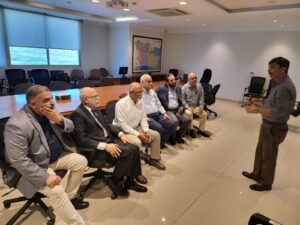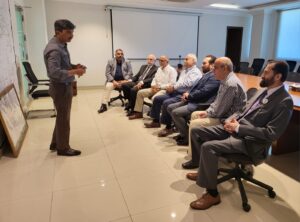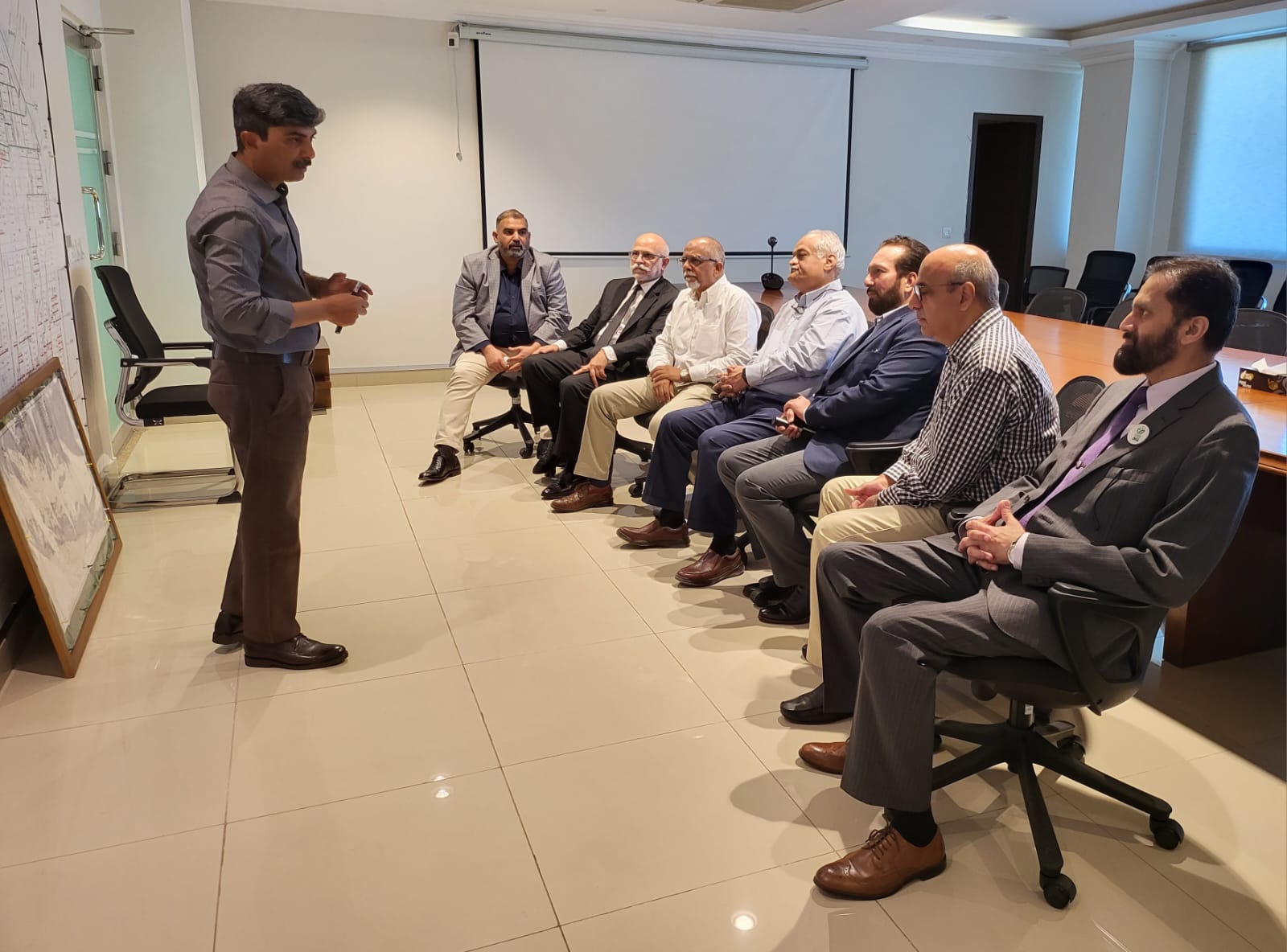Dear DSRA Members,
We are pleased to update you on the recent developments regarding our concerns related to the Stormwater Drains project in DHA. The DSRA Stormwater Drains Committee, comprising its President Mr. Nasir Jahangir Rifat Shaikh, three senior Architects and an Engineer all members of DSRA namely Syed Zia Askari Naqvi member CEC, Arch Arif Belgaumi, Arch Mansoor Usmani Gen Secretary and Engr Zaheer Ahmed Khan member CEC, had expressed their apprehensions regarding the project’s Design, Necessity, Coordination, Supervision & Quality after conducting spot checks in various Phases of DHA specifically Phase II, on the complaints of the DSRA members living in DHA Phase II.
These concerns were addressed in a dedicated presentation arranged for DSRA by DHA. The meeting facilitated a direct dialogue between our committee and key officials of DHA handling the project including Project Director Col Imran Ahmed Dev Dte , the Chief Engineer Col Atif Gulzar Shaikh, the Executive Director Marketing Brig Shazad Ahmad & Director Marketing Col Syed Farrukh Rizvi.
Earlier during our site inspections, it became evident that extensive excavation work was underway in Phase II, apparently without prior notice to the residents. This work appeared to be technically unnecessary, which greatly alleviated the concerns of residents who had been experiencing difficulties due to road excavation in front of their homes, hindering their access.
The primary focus of our discussions was the substantial disruptions observed throughout various phases of DHA which have already been pointed out in our earlier write ups on the subject, especially in what DHA designates as the priority 1 section of the project. These disruptions were primarily attributed to the uncoordinated excavation of the drainage system creating a mess lacking adequate oversight from the client, contractor, and the consultant. These issues raised significant concerns about the project’s necessity, its design, the way it was being executed, quality of material and the competence of those overseeing it. Additionally, our committee questioned the necessity of excavation in Phase II which is being referred to as priority 2 section. Furthermore, we aimed to ensure that if the work was indeed necessary, it would be conducted in an organized manner, with proper supervision and a commitment to maintaining high-quality standards while causing as little as possible inconvenience to the residents.
Phase 2, which never experienced any storm water issues was not part of the original design and was added later. The Project Director clarified that Phase II excavation was initiated due to resident’s applications highlighting storm water challenges being experienced by residents residing around the curve of Punjab colony side. The existing drain around the Punjab colony side curve handling stormwater outflow was in fact a sewerage outflow. According to the Project Director the topography of Phase II was such that it naturally channelized the waters to flow through the surface of streets and avenues into the sewage drain on the Punjab colony curve which over a period of years got disturbed due to redoing of roads time and again which lowered the houses giving rise to the necessity of properly channelizing the stormwater to flow in the drain specifically constructed for the purpose. Thus the drains in Phase II are being constructed to channelize the Stormwater from the street and avenues to the Stormwater Drain being constructed along the curve of Punjab Colony side long side and parallel to the existing sewerage drain.
Though our reservations to its controversial design and maintaining gradient still in place, unlike our previous inspection of the drains this time we noted improved supervision and organized ongoing work, with round-the-clock DHA surveillance and NLC officials on their legs and a systematic approach which we believe was outlined by the Corps Commander. This approach entails excavating specified boulevards, avenues, and streets in a systematic manner one after completion of the other, laying drains, recarpeting roads and completing before moving on to the next. The Project Director assured us that our concerns, including issues like illegal sewerage connections in the old drains, poorly finished work of the new ones and poorly done drain covers, would be addressed promptly.
The Project Director and his team emphasized their commitment to quality, pledging that no subpar work would be approved. Payments to contractors and consultants will be contingent on meeting the required quality standards, ensuring accountability. They also shared plans for installing fully automated, sensor-controlled heavy suction pumps to facilitate smooth storm water flow and outflow which though sounds hi-tech however puts a question mark on the gradient maintained.
While the ultimate test will come when it rains, the primary concern following its design centers on the project’s future once it is handed over to the Clifton Cantonment Board (CBC). Unfortunately, past experiences have been deeply disheartening. The CBC not only failed to maintain the previous Rs. 4 billion Stormwater Drain project constructed just a couple of years ago, but they were also complicit in the illegal connection of sewerage lines to it, which resulted in clogged drains and ultimately led to its failure. To make matters worse, the impoverished residents are still being unjustly charged for the refurbishment of the project that has already failed.
In summary, the Project Director demonstrated a high level of professionalism and a deep understanding of the project, which left us thoroughly impressed and reassured about the successful execution of the project.
We express our sincere gratitude to DHA, including its Executive Director Marketing, Director Marketing, the Project Director, and the Chief Engineer of the Storm Water Drains Project. We highly appreciate their efforts in organizing an exceptionally informative session. Their professionalism in addressing our queries and incorporating our suggestions was truly commendable. Moreover, we are pleased to note their willingness to engage in regular interactions with us. We look forward to continuing this valuable collaboration in the best interest of residents and appreciate their dedication to fostering a constructive partnership.




